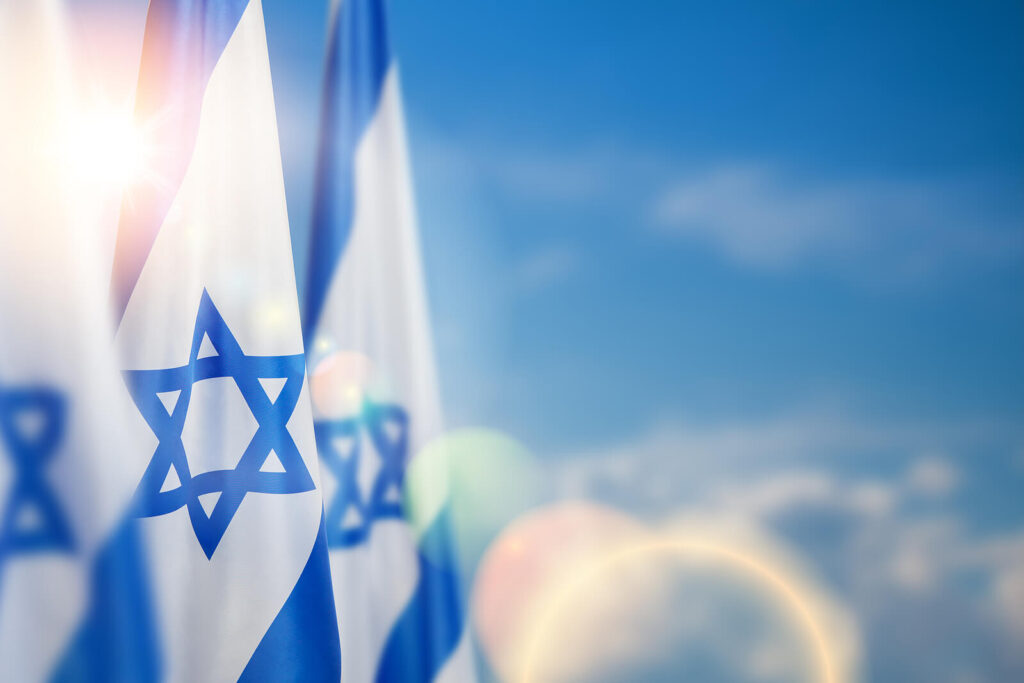The sheer scale and complexity of Hamas’ terror invasion of Israel have profoundly shattered the status quo that has characterized Israeli policy vis-à-vis Gaza and Hamas for the past 15 years. Up until this past weekend, Israel’s strategy towards Hamas has been one of containment. Now, Israelis spanning the political spectrum have reached a new consensus around the goal of removing Hamas from power.
Since Hamas seized control of Gaza in 2007, Israel essentially strove to manage the terrorist threat the organization posed by leveraging economic incentives to encourage quiet and military force to maintain deterrence.
Prime Minister Benjamin Netanyahu for years embraced the fracture between Palestinian factions and even sought to strengthen Hamas in Gaza as a counterweight to the more moderate Fatah in the West Bank, with the ultimate aim of preventing the emergence of a unified Palestinian polity that could be considered a viable partner for peace negotiations. This strategy ultimately proved to be misguided as this week’s deadly terror attacks underscore.
Where previous rounds of Israel-Gaza military conflict ended with negotiated ceasefires that restored the status quo ante, the current war could deliver a definitive outcome to the conflict between Israel and Hamas. Israel will no longer settle for any situation where Hamas has the capability to inflict further harm on its citizens. What was once a far-fetched scenario under the previous norms that governed Israel’s approach to the Gaza arena is now all but inevitable.
Israel is currently preparing to launch a ground invasion into Gaza in order to end Hamas’ grip on the coastal enclave and dismantle its military capabilities and infrastructure. Given Israel’s formidable military capabilities, those short-term aims may well be within Israel’s reach.
Israel’s strategic challenges as it seeks to dismantle Hamas
As Israel takes the offensive, international observers will rightly draw attention to the acute humanitarian concerns associated with rooting out a terror organization embedded among 2.3 million human beings in the most densely populated place on Earth. But before any Israeli boots hit the Gazan ground, there are also a handful of strategic challenges that Israel’s leadership must address if it hopes to put an end to this bloodshed and achieve meaningful victory for Israelis in the wake of such devastating loss.
- First, from the outset of this war Israel’s most obvious strategic concern is the possibility of a multi-front conflict. If reports of Iran’s involvement in coordinating Hamas’ attack hold true, there is a real risk of a significant escalation with Hezbollah, which for months has been intensifying its rhetorical and military provocations against Israel. Iran’s Lebanese proxy has far greater capabilities than Hamas, particularly in the quality and quantity of its rockets. Over the past several days, the IDF has engaged in clashes on the Israel-Lebanon border with Hezbollah and Lebanese-based Palestinian groups. After days of lower-intensity conflict, we could soon witness a significant escalation on that front.
- Another arena that could erupt is the West Bank, where a recent uptick in both Palestinian and settler terrorist attacks, the proliferation of illegal settlement outposts and farms, a weakened Palestinian Authority and the Israeli far-right’s ascent to power have already sown the seeds for greater violence. Prior to the outbreak of the war on Saturday, 80% of standing IDF troops were stationed in the West Bank, a testament to the outsized security burden posed by the need to protect far-flung settlements, even under non-wartime circumstances. A popular Palestinian uprising akin to the Second Intifada, including terror attacks targeting Israelis on both sides of the West Bank/Israel border, could pose a dire security challenge and demand much more attention from the IDF.
- Jerusalem is also a potential flashpoint, given Hamas’ messaging about al-Aqsa as the inspiration for their assault.
- Meanwhile, within Israel, there is an acute risk of interethnic clashes between Israel’s Jewish and Arab citizens, as occurred during the (much smaller-scale) Israel-Gaza conflict of May 2021.
All of these arenas igniting simultaneously could pose an unprecedented challenge to the IDF and result in a significant security deterioration that meaningfully disrupts and threatens the lives of all who live between the Mediterranean and the Jordan River.
A multi-theater conflagration could be an existential threat for Israel. While Israel cannot prevent all Palestinian terror attacks or all rocket launches and incursions from Hezbollah in the north, the Netanyahu government must do all it can to prevent provocations from the Israeli side, including Temple Mount visits by far-right ministers and settler riots against Palestinians under the nose of the IDF. It is imperative that Israel avoid any escalatory moves that are not strictly necessary to ensure victory over Hamas and to protect its citizens.
The problem of what comes after Hamas
Another looming strategic challenge that Israel must consider is determining what comes next if it deals a decisive blow to Hamas. Dismantling the security threat posed by Hamas in Gaza also amounts to dismantling a de facto government that has ruled there for the past 15 years.
In the short term, Israel will necessarily be the one to fill that power vacuum, but it clearly has no interest in administering the lives of millions of Palestinians—a hostile civilian population existing under deteriorating humanitarian conditions that were already dire before this war. Doing so would pose an incredible economic and security burden.
When Israel goes into Gaza, it must do so with an exit strategy in mind, ideally involving the Palestinian Authority. The PA is a highly flawed and corrupt entity, but for all its faults, it remains the internationally recognized government of the Palestinians and one with which Israel has a functioning security relationship.
While the Palestinian Authority will certainly not want to be perceived as riding the IDF’s coattails back into Gaza, it may not have a better opportunity to reunite the Palestinian polity and restore its legitimacy by spearheading the territory’s rehabilitation. Ultimately, Israel has three different paths to pursue in a post-Hamas Gaza: restoring the PA, endless Israeli occupation or destroying and depopulating the territory entirely. The choice is clear.
Israel has experienced a cataclysm that may be remembered as the darkest and most traumatic moment in its history. The unprecedented scale of Hamas’ surprise attack against Israeli civilian communities has launched the country into uncharted waters, and the old playbook that guided Israel’s approach to Gaza and other security threats no longer applies.
Decision-makers in Israel’s government and military should heed public pressure to take decisive and unrelenting action to eliminate terrorist threats in Gaza, but they must do so with a clear strategy that looks beyond defeating Hamas and avoids erupting other fronts. If executed incorrectly, the tragedy of October 7 may only be the beginning.







